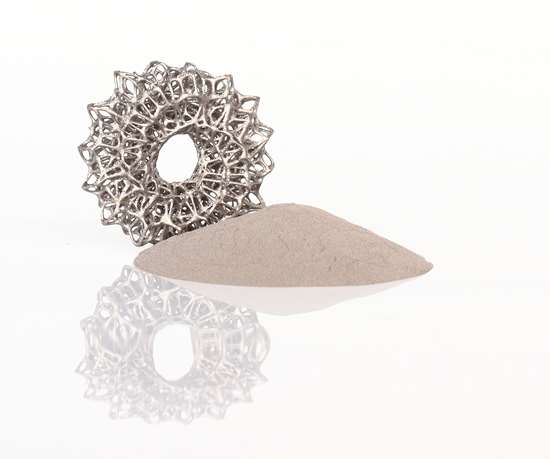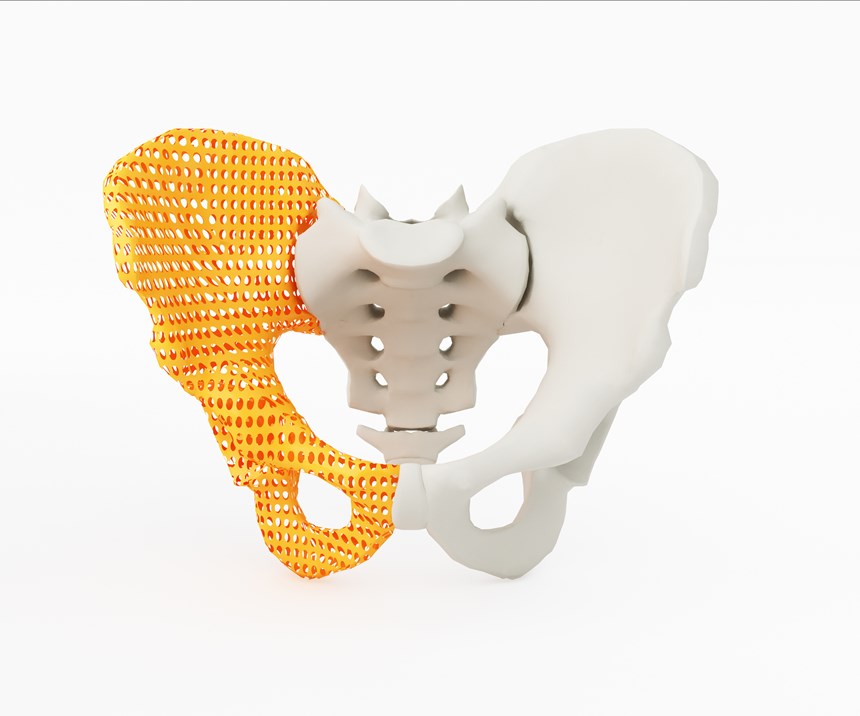3D printing is a subset of additive manufacturing (AM) that has been in use for decades, and has quickly gained widespread acceptance within the medical device manufacturing industry for functional applications.
With the advancement of technologies and materials, 3D printing is now regarded as a viable alternative to the more conventional production methods (such as cutting or injecting) and, in some instances, is completely eliminating the need for machining. It is allowing medical device designers to create ever more complex parts with intricate geometries that would otherwise be incredibly time consuming or even impossible to make using more traditional methods.
Featured Content
In the past, design compromises had to be made for parts that were too intricate or too small. But now, 3D printing has opened up design possibilities that are almost limitless. It is providing a way to make detailed, precise and patient-specific parts matched to their unique anatomy. Dental aligners, hearing aids, dental crowns, contact lenses, prosthetic devices and dentures can all now be 3D printed and custom made for each individual patient.
This article examines how one AM process, binder jetting, is used to produce these 3D-printed products and how choosing the correct binder jetting finishing fluids plays a key role in the success of that process.
Binder Jetting – A Quick Overview
There are a number of additive manufacturing methods used to make parts. Some, like selective laser melting (SLM) and electron beam melting (EBM), are quite sophisticated processes that require specialized equipment, complex safety procedures and very skilled operators. Binder jetting (BDJ) is a faster, more affordable alternative to other AM processes as it does not employ lasers or electron beams to build parts; thereby, making it easier to use with minimal training.
Binder jetting makes three-dimensional parts from a computer-aided design (CAD) file. It uses a powdered material, typically plastic or metal, and a binding agent. Nozzles on the printer deposit an ultrafine layer of powder on a build platform. Then, a liquid wax bonding agent is applied to bind the particles together. The printhead continues to drop alternating layers of the powdered material and the binding material, layer by layer, to form a solid part. The quality and precision of parts made with this 3D printing process often result in parts requiring minimal postprocessing to create a finished part with excellent dimensional repeatability.
The 3D printing process using binder jetting may seem straightforward, however, it is important to get the details right for the best possible end product. This includes choosing the best finishing methods and fluids for the printing material being used.
Fluid Finishing for Plastic Parts
Historically, 3D printing was mostly restricted to making plastic parts. Even today, over 80% of 3D-printed parts are made using polymers. 3D-printed plastic parts are made by depositing multiple layers of special polymers and binders built up layer by layer. Since the plastic parts are built progressively, it sometimes leaves the printed parts with a stepped or terraced surface that requires smoothing to get a finished part.
Traditional methods of smoothing out the terraces — such as grinding, buffing or sandblasting — are extremely manual, time consuming and often leave particles behind. Today, smoothing fluids are available for use in a vapor degreaser. Immersing the unfinished parts in a fast-evaporating solvent vapor slightly melts the surface of the plastic parts, leveling out any irregularities and removing the terraces. It leaves a smooth finish without any leftover particles or damage to the finished part.
In order for the smoothing to work, it is necessary to understand the chemical composition of the polymer being used and to find the correct chemical solution for the application.
Debinding Fluids for Metal Parts
While many people still associate 3D printing with plastics, the commercialization of metal 3D printing is quickly evolving. Until recently, metal 3D printing was only used for prototyping or low-volume runs. It was too expensive and too slow for mass production and overly complex for wide-scale use. However, as technologies advance, metal 3D printing is quickly making its way to the manufacturing floor for higher production runs of end-use parts.
Metal 3D printing employs the same layered build process as plastic 3D printing, but uses fine metal powders instead of polymers. Typical metal powders include stainless steel, tool steel and many other ferrous and nonferrous alloys. The binder jetting process uses alternating layers of the fine metal powder and a binding agent (typically paraffin wax, carnauba wax or specialty polyethylene waxes) to create the green-state parts. After printing, each green part needs to be cleaned and sintered in an oven to make it a fully dense metal part.
The binding agents serve a critical purpose in the forming process, but, in many instances, must be at least partially removed before the part can be exposed to the high heat required for sintering. In many cases, the binders are removed using a specialty solvent that is engineered to selectively remove some, but not all, of the binders. The binder is removed to avoid contamination of the metal during sintering, but it is essential that some of the binder remains so that the part maintains dimensional accuracy during the sintering process.
Selection of a debinding method is a balance of removing the binder in the shortest amount of time and with the least amount of damage to the structure because, as the binder is removed, the structure becomes fragile. Solvent extraction of the binder can be done in either the solvent vapor or the liquid phase in a vapor degreaser. Both rely on the solvent flowing through the pores, internal channels and passageways of the structure to dissolve the wax. This allows the parts to be exposed to higher temperatures in the sintering furnace, significantly reducing the time to achieve a finished part.
New solvent blends have been developed to speed the solvent debinding process without the use of n-propyl bromide, methyl pyrrolidone, polyethylene glycol, heptane or trichloroethane, which all carry health and/or environmental baggage. The new debinding fluids boast low viscosity and surface tension ratings, are nonflammable and engineered for selectivity so the right amount of binder is removed without damage to the part structure. These new debinding fluids, when used in a vapor degreaser, can also be distilled and reused in the debinding process.
Once the debinding fluid is fully removed from the part structure, the parts are then thermally sintered under high heat to bond the metal powder into its finished solid mass state. The remaining binder in the part is essentially burned off at sintering temperatures. After that, the parts can be postprocessed using standard metal finishing techniques such as grinding, cutting or coating.
Companies looking for help in determining the correct debinding fluid or method to use should consult with a critical cleaning partner that specializes in vapor degreaser debinding. Some fluid manufacturers have field engineers that conduct on-site audits to evaluate debinding methods. They can also perform comprehensive in-lab tests with sample parts to ensure cleaning and debinding success.
Venesia Hurtubise is a technical chemist at MicroCare Medical. Visit microcaremed.com.
RELATED CONTENT
-
Possibilities From Electroplating 3D Printed Plastic Parts
Adding layers of nickel or copper to 3D printed polymer can impart desired properties such as electrical conductivity, EMI shielding, abrasion resistance and improved strength — approaching and even exceeding 3D printed metal, according to RePliForm.
-
NASF/AESF Foundation Research Project #123: Electrochemical Manufacturing for Energy Applications – 3rd Quarterly Report - Part II
The NASF-AESF Foundation Research Board has selected a project on electrodeposition toward developing low-cost and scalable manufacturing processes for hydrogen fuel cells and electrolysis cells for clean transportation and distributed power applications. This third quarterly report consists of Part II of a review paper, prepared and submitted to a peer-reviewed journal for publication, covering opportunities and challenges for additive manufacturing technologies. Part I, covering the literature on additive manufacturing of SOFCs and SOECs, was published in December 2022.
-
5 Big Themes in Additive Manufacturing at Formnext Forum: Austin
As manufacturing advances with additive, the advance increasingly emphasizes these five themes.





















